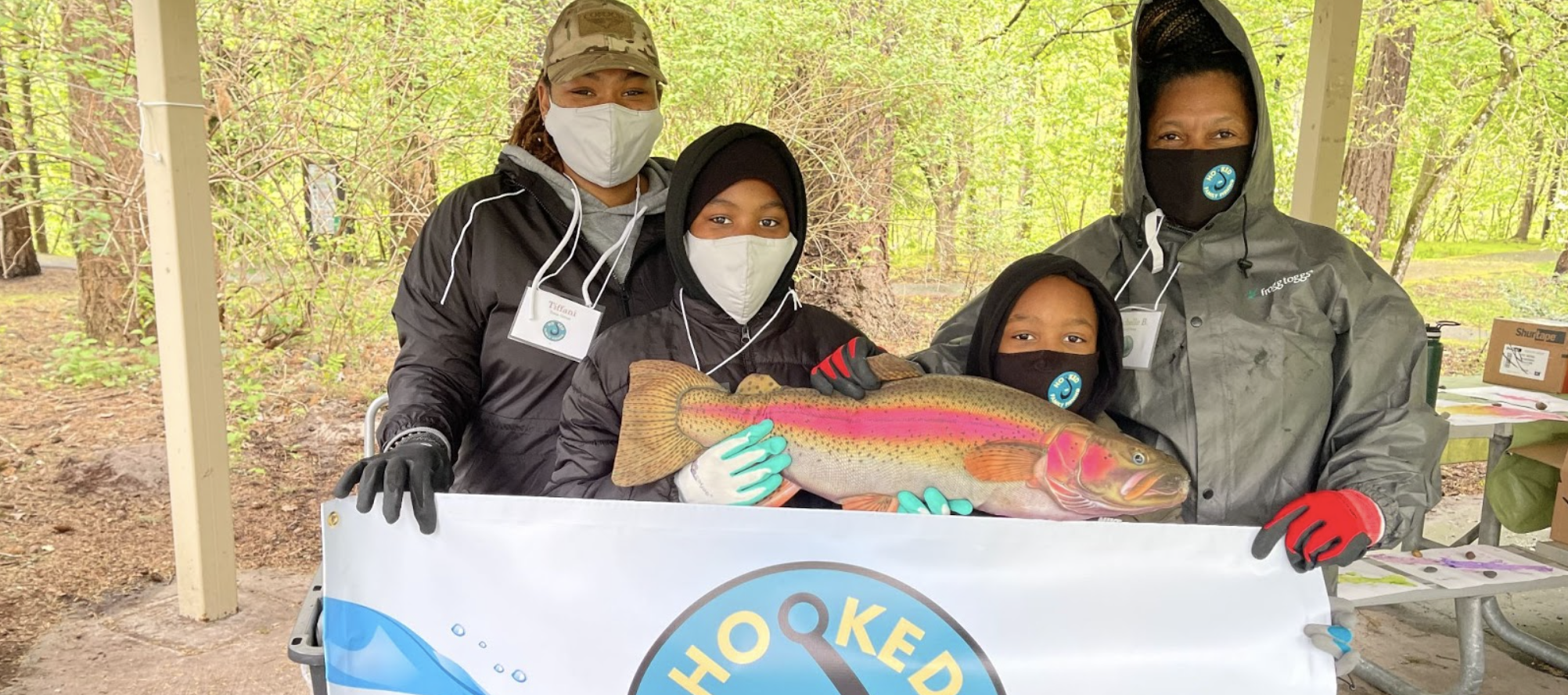
Hooked on Family Fishing: Breaking Through Environmental Barriers
May 28, 2021
Norm Ritchie Opinion: Time for Tough Conversations
June 23, 2021This Summer Could Shape the Future of Pacific Northwest Salmon
By Betsy Emery, Advocacy and Campaign Manager
June 14, 2021
I t’s early June and we are already seeing red flags that salmon will be in serious trouble this summer.
Oregon experienced the driest spring since the 1890s. The spring summer Chinook adult salmon returns weren’t enough to support a fishing season on the Clearwater River in Idaho. Now, as we head into summer, over 70% of the state is in severe or extreme drought, and lack of snowpack has many of our streams flowing with only 25% of the water they usually have this time of year. We haven’t even approached the depths of summer when the mainstem Columbia River routinely heats up above the 68 degree temperature salmon can withstand, increasing risk for disease outbreaks.
Drought and hot air are also causing concern about a potentially catastrophic wildfire season this summer, which would compound stress on salmon--and the communities, tribes and economies that depend on them.
All in all, it’s increasingly likely that salmon have a very, very difficult summer and fall ahead of them. The Oregon Department of Fish and Wildlife is already preparing recreational anglers that there will likely be emergency fishing closures and regulatory changes as a result of hot water, including potentially closing fisheries each day in the early afternoon or requiring barbless hooks to reduce stress on native fish.
Fisheries biologists and advocates are especially concerned about what this summer could mean for at-risk fish runs. The recent extinction analysis conducted by the Nez Perce Tribe, determined that 77% of Snake River spring summer Chinook could be quasi extinct within the next 4 years and highlighted that some of our most imperiled stocks are not healthy enough to survive a single catastrophic event.
Scientists have been raising alarms about salmon extinction for decades, but now, the clock is ticking. If our elected leaders don’t take bold action soon, Idaho will lose many of their iconic salmon and steelhead runs within this decade, affecting fisheries, communities, and economies in Idaho, Washington, and Oregon.
We cannot risk these devastating losses: It’s time to remove the four lower Snake River dams. They directly kill 30% of Idaho’s juvenile salmon on their migration to the ocean. They are the primary source of heat pollution killing cold-water salmon. They block access to the coldest, most pristine habitat in the Lower 48. The Army Corps of Engineers and Bonneville Power Administration even determined last year that breaching these four dams is the only management option capable of recovering quasi-extinct Snake River runs. Yet, the agencies aren’t willing to take the one action we need to more than double adult salmon returns to the mouth of the Columbia River in Astoria, Oregon: breach the lower Snake River dams.
Elected leaders across the Northwest - Reps. Blumenauer and Simpson, Senator Murray, and Govs. Inslee and Brown - all recognize the urgency of this situation and need for collaborative solutions that ensure salmon survival. Unfortunately, they can’t agree on a legislative pathway or a timeline that results in bold actions amid the extinction crisis. Many legislators have sidelined Rep. Simpson’s proposal to use the infrastructure bill as a vehicle to fund comprehensive restoration and build new energy and transportation infrastructure, but they haven’t offered another viable pathway for urgent, bold recovery action.
It’s past time for the Northwest delegation to find a meaningful, durable, legislative solution to this ongoing problem. We do not have any more time to waste. Oregon, Washington, and Idaho Senators need to engage in the conversations currently underway among tribes, utilities, growers, and the fishing community. We need congressional involvement to find compromises that protect salmon, sustain economies, generate affordable energy, and honor tribes.
This summer is setting up to be a defining moment for Pacific Northwest salmon and river-dependent communities. Will our elected leaders lean into the hard work of recovering salmon and investing in Northwest communities? Or will the legacy of governmental inaction allow salmon to go extinct?




